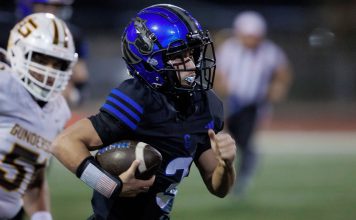Many immigrant cultures have contributed to making the South
Valley the great place it is, but the Italians are particularly
prominent. Today, I want to focus on one Italian-American family
and how they created the famous Casa de Fruta roadside attraction
on Pacheco Pass near Hollister.
Many immigrant cultures have contributed to making the South Valley the great place it is, but the Italians are particularly prominent. Today, I want to focus on one Italian-American family and how they created the famous Casa de Fruta roadside attraction on Pacheco Pass near Hollister.
The Zanger family story goes back to 1885 when four brothers – Guiseppe, Alfonse, Bruno and Pasquale Bisceglia –voyaged from the Calabria region of southern Italy to seek new lives in the New World. The young men first found employment in the western provinces of Canada, performing back-breaking work laying down tracks for the Canadian Pacific Railroad. This job led them to the Bay Area in the 1890s where they found that the Mediterranean-like climate in the Santa Clara Valley reminded them of Italy.
In 1900, the brothers brought their family to the Bay Area to work in the agricultural and food-processing industry. Among them was a 2-year-old girl named Clara Bisceglia Cribari. She’d later play an important part in the Casa de Fruta story.
The immigrant men broke horses in the Berryessa area for John Francis Pyle, the owner of a fruit and vegetable cannery in San Jose. In exchange for their labor, Pyle gave the men a small plot of land in Paradise Valley near what’s now Chesbro Reservoir. The brothers planted grape vines and grew tomatoes between the rows to make the most of the fertile soil. They produced wine and canned the tomatoes in a small shed. Eventually, they expanded their business by building a cannery in Morgan Hill on what is now Bisceglia Avenue. It grew into a successful operation, becoming a typical American success story fueled by ambitious dreams and hard work.
Guiseppe “Joseph” Bisceglia certainly couldn’t have known it, but when he set off one spring morning in 1908 to the Miller and Lux Ranch in Los Banos to buy some draft horses, his journey would result in the creation of one of California’s most notable travel attractions. When he got to the old bridge that spanned Pacheco Creek, he noticed the immense mustard bushes full of yellow flowers. An artesian spring bubbled up from the ground nearby. To Bisceglia, the spring provided a sure sign that the soil must be exceptionally fertile and blessed with a good supply of water from the aquifer.
Upon his return, he told his brothers about the Pacheco Pass property and suggested they buy it and plant an orchard there. With a loan from A.P. Giannini, the founder of the Bank of Italy (which later became Bank of America), they bought the land and planted cherry trees to produce fruit for their cannery operations in San Jose and Morgan Hill.
Little Clara grew up and married Henry Zanger of San Jose and the couple had six children. In 1938, she inherited 20 acres of the Pacheco Pass orchard property that her uncles had developed. Five years later, her three teenaged sons – George, Joseph and Eugene Zanger – built a small fruit stand on the side of Pacheco Pass Road and called it Casa de Fruta – the House of Fruit. They sold baskets of cherries and other produce to people traveling through the mountains. Their business soon became a popular roadside stop, prompting the brothers to expand it in the post-war years.
In 1967, the brothers built a 24-hour cafe near their original stand. The entire family helped out in the construction, including the grandchildren who laid bricks. This restaurant proved a hit in attracting travelers, so the next year the Zanger family opened up a gift shop and a gas station. To entice families to visit, they included a small zoo and a playground for kids. A hamburger stand and an RV park soon followed. In the 1990s, Casa de Fruta opened an outlet at San Jose’s Valley Fair Shopping Center, and also expanded onto the Internet to sell its fruit, wine and gift items online.
Every year, thousands of people journeying between the South Valley and the San Joaquin Valley on Highway 152 stop at the Casa de Fruta roadside resort. Most of them have no idea about the colorful history of the attraction that got its start 100 years ago when an Italian immigrant named Guiseppe Bisceglia journeyed through Pacheco Pass one spring morning. And his niece Clara Zanger added to the story with her imagination and ambition. Their dream continues on a century later.












